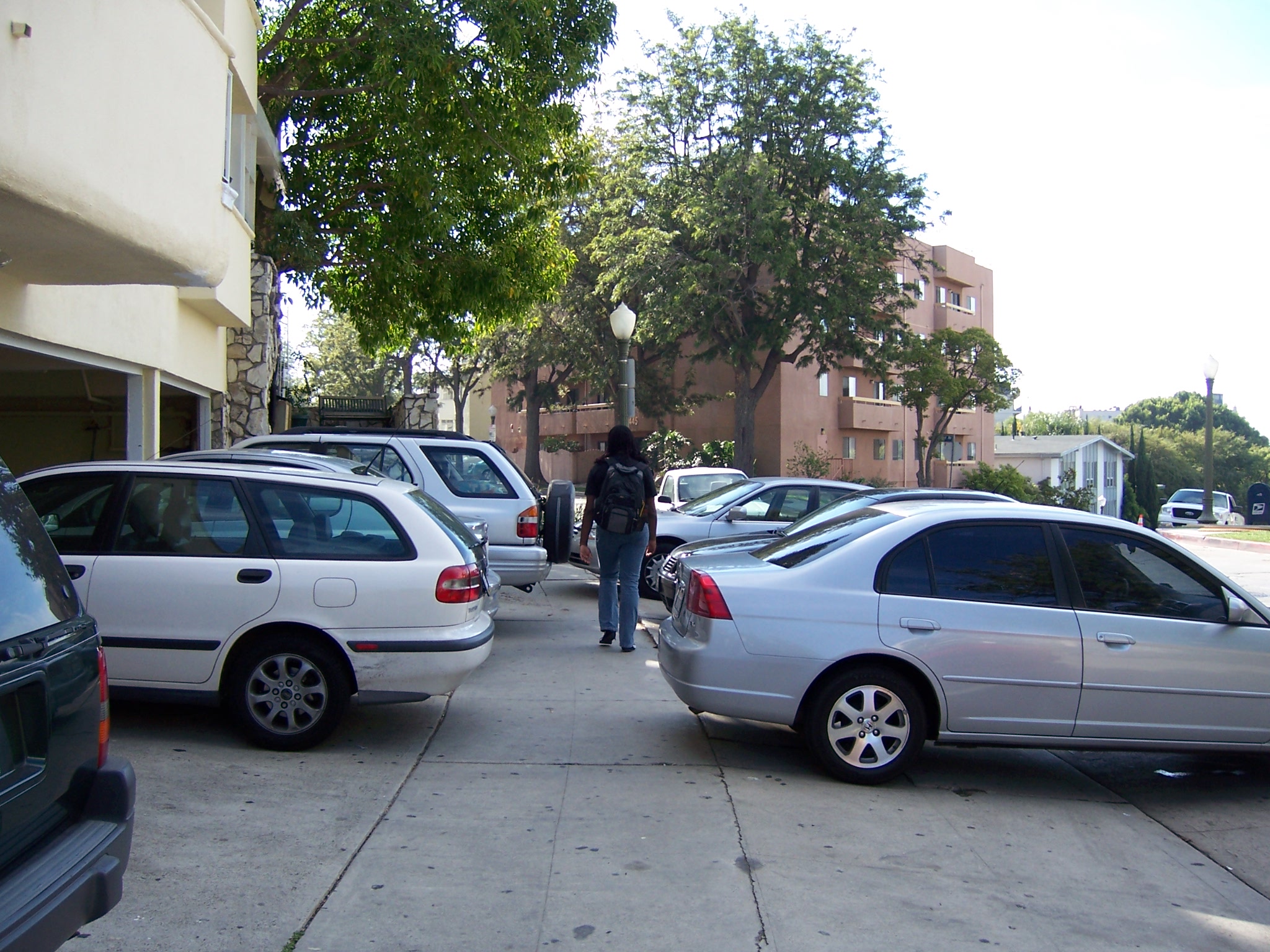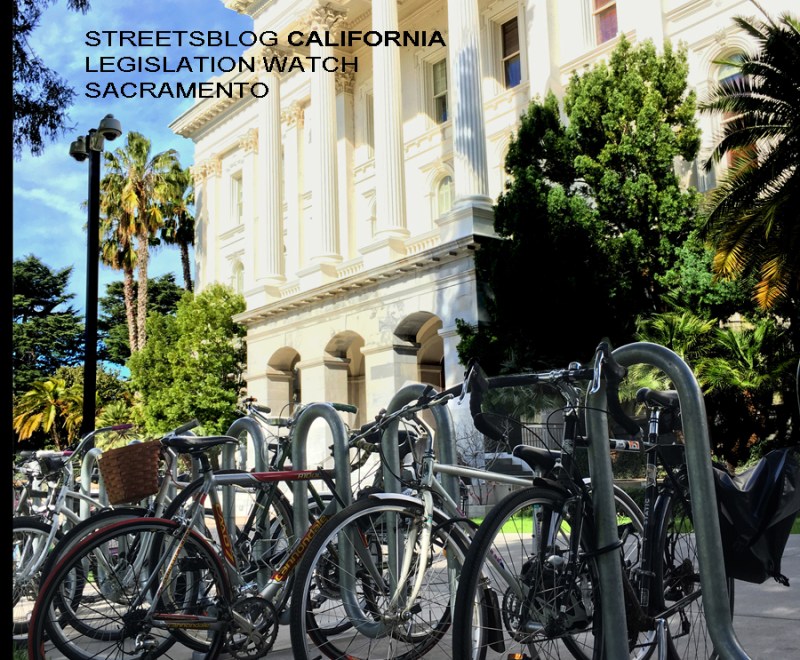Legislative Analyst Report on Active Transportation Program: Part 2
4:56 PM PST on March 7, 2019

Note: GJEL Accident Attorneys regularly sponsors coverage on Streetsblog San Francisco and Streetsblog California. Unless noted in the story, GJEL Accident Attorneys is not consulted for the content or editorial direction of the sponsored content.
This is the second part of our two-part look at the first official analysis of the Active Transportation Program. In addition to recommending better data collection, as discussed in yesterday's post, the LAO suggests the legislature reconsider some of the program's objectives, and consider making changes to the way the program funding is decided. It also questions whether the program's careful scoring process is efficient or necessary.
These two recommendations will be discussed below.
The Purpose of Three Distinct Categories
The LAO report notes that the ATP tends to fund similar projects across all three of its geographical components: Statewide, Small Urban and Rural, and Large Urban Regions. This prompts the LAO to ask whether the legislature should consider whether it has different objectives for the three categories.
The categories were the result of compromises made in the early days of formulating the program. The state's Metropolitan Planning Organizations balked at being told what to do with their funding by the state, so a separate category was carved out for them. Now the ten largest MPOs receive forty percent of the total funding, with the amount going to each based on its population.
But less populated areas found themselves competing in a large statewide competition that included better funded and better prepared applicants, so they asked for their own carve-out. Small Urban and Rural areas are now guaranteed to receive ten percent of the total funding. The list of winning projects is based on the score they receive through the statewide program.
All the projects apply first through the statewide program, where they are scored by a team of volunteers. The highest scoring projects are chosen to receive funding through the statewide competition, and the ones that don't make the cut are then considered in one of the other two categories, depending which they fit into.
The LAO report says the statewide category was created "to provide the opportunity for state-level decision-making on active transportation priorities and projects." However, this actually applies to the entire ATP program, and is reflected in its goals and scoring criteria.
Nevertheless, the LAO writes that "we think [the statewide] component provides a key opportunity for the Legislature to consider changes to the goals, priorities, and types of projects funded. Accordingly, we recommend that the Legislature consider whether the role of the statewide component of the program should focus on larger, more transformative projects, as was envisioned when the ATP was established. We think such a focus makes sense because larger, more transformative projects are difficult to fund at the local level and therefore may only be possible through a state-administered program."
The report goes on to recommend that the California Transportation Commission (CTC) investigate what is preventing larger projects from applying--whether it is lack of matching funds, limited capacity to manage them, or lack of encouragement or help on the part of ATP staff.
These questions are useful, although, as with the recommendation to require better data, the switch toward larger projects is already happening. With each successive funding cycle, the projects that apply and those that are awarded ATP funds have gotten larger and more ambitious. If this is the goal of the program, it is a good thing, although it also means that overall a smaller number of projects get funding. That is a problem primarily because the ATP program is limited, and only a small percentage of projects that apply are awarded. So far, in cycle four, only about ten percent of the projects got funding--although that percentage will go up when all the allocations have been made.
The LAO suggests the legislature consider restricting the statewide portion to focus only on large projects, with the other two funding smaller ones. However, this may not be the best way to organize the program. For one thing, it could restrict MPOs more than they are currently, if they can only support projects up to a certain size. Some of the larger MPOs encompass several counties and many cities, and their interest in building large projects would not necessarily be any less than the state's.
The report also pushes for the MPOs to have more autonomy and flexibility. The authors suggest eliminating the requirement for regional projects to submit a state application, considering letting regions come up with their own project lists, or just handing funding over to the MPOs to do with as they wish.
But the MPOs already enjoy much of that flexibility. According to Laurie Waters, the CTC staff member who oversees the ATP, the MPOs are only required to consider projects that have applied through the statewide process. However, she says, their final priority list is up to them, and "they can adopt their own guidelines and scoring process."
"They all do it differently," she said. "For example, KERNCOG doesn't have its own process or require a supplemental application; it just uses the statewide scoring to pick its projects. But MTC (the Bay Area's MPO) wants a lot more say. They have a supplemental application that anyone who wants ATP money through them has to fill out. They also do their own scoring, based on their priorities."
The MPOs are only limited in their project list in that all projects need to be scored against the state's ATP rubric at the same time. The LAO believes that "it is possible that certain projects that are a high priority from a local or regional perspective are not eligible to be funded," but provides no examples.
Another consequence of granting funds directly to the MPOs without requiring them to submit their lists first to the state program is that they "would no longer be subject to project-level oversight by the CTC or to CTC fund allocation for each phase of the project." Whether that would be a good thing for the program's objectives or not is subject to debate.
Questions about Scoring
The LAO report also includes a discussion of the application and scoring process, which it says is "cumbersome" and beyond the capacity of some agencies. This is a problem CTC staff has been trying to tackle since the program's beginning, and is one of the reasons it offers free technical assistance to agencies that need it. The bigger problem is that there is not enough money in the ATP to fund every project that applies, or even most of them. The "cumbersome" application and the complicated scoring process is a product of the program's attempt to be as transparent and fair as possible in the way it allocates that limited money.
The scoring process is most definitely complex. More than a hundred volunteers evaluate each eligible application against a scoring rubric that includes whether a project benefits a disadvantaged community, the quality of public participation in its development, and whether it is likely to be completed. CTC staff ensure consistency among the volunteer teams, working with them to resolve any large discrepancies in the scores.
CTC staff do not pick the winners; they create a list that ranks them by the scores given them by the volunteers, and start allocating from the top. There have been instances of projects being re-scored even after the scores have been made public, and it's an important aspect of the program's transparency that this be a process the public can see and participate in.
The LAO report calls the scoring process "somewhat duplicative" since CTC staff double check the volunteer scores. This looks like an inefficiency, as does relying on a large number of volunteers that need a certain amount of training. The report concludes, "from the information available at the time of this analysis, it is unclear how the use of volunteer teams benefits the overall administration of the program, since CTC staff are also performing their own evaluation of each project."
But the scoring process used by the ATP is an example of one of the best ways to involve public input in statewide decision-making. It ensures fairness, with several volunteers scoring each project and no one being allowed to score any project they may have a personal or professional interest in.
It's one of the aspects of the Active Transportation Program that make it a model program. Instead of changing the ATP, maybe other state transportation funding programs should consider adopting some of its guidelines.
Streetsblog California editor Melanie Curry has been thinking about transportation, and how to improve conditions for bicyclists, ever since commuting to school by bike long before bike lanes were a thing. She was Managing Editor at the East Bay Express, editor of Access Magazine for the University of California Transportation Center, and earned her Masters in City Planning from UC Berkeley.
Stay in touch
Sign up for our free newsletter
More from Streetsblog California
Thursday’s Headlines
CA youth speak out on climate: How LA Metro plans to spend $ from canceled 710 freeway; Watch out, illegal SF parkers, tickets are coming; More
Legislators Tackle AV, School Zone Safety
Are AVs freight trucks ready to be deployed on California roads with no one in them?
Metro Looks to Approve Torrance C Line Extension Alignment
Selecting the relatively low-cost hybrid alternative should help the oft-delayed South Bay C Line extension move a step closer to reality
What to Say When Someone Claims ‘No One Bikes or Walks in Bad Weather’
Yes, sustainable modes are more vulnerable to bad weather. But that's why we should invest more in them — not less.
Wednesday’s Headlines
Road project leaves Half Moon Bay residents without access; Kern County residents concerned about a carbon capture plan; Who works from home in the Bay Area? More




